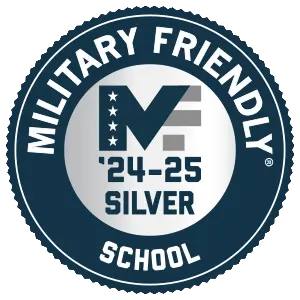Are Truck Drivers in Demand?
 Do you dream of the open road behind the wheel of an 18-wheeler? Becoming a truck driver is a great way to set out on the open road. With so much demand for truck drivers, you will be stepping into a stable career. So, why become a truck driver?
Do you dream of the open road behind the wheel of an 18-wheeler? Becoming a truck driver is a great way to set out on the open road. With so much demand for truck drivers, you will be stepping into a stable career. So, why become a truck driver?
Why Become a Truck Driver?
There are many benefits to becoming a truck driver. From a quick training regimen to being your own boss and everything in between, getting your Class A CDL is a great way to take the bull by the horns and become a truck driver.
A Quick Training Regimen
Instead of training for a year or more to work in the trades, you can become a truck driver after completing a 4-week Class A CDL certification program at Ohio Business College. This program will offer you the required hours behind the wheel and prepare you for the Class A CDL certification exam.
Health Insurance and Other Benefits
Truck drivers that work full-time enjoy benefits like health insurance, dental and vision coverage, and life insurance. Some large carriers even offer tuition reimbursement, retirement savings plans and other benefits.
Job Stability
Since truck drivers are in demand, becoming a truck driver is a stable job that offers growth opportunities throughout your truck driving career.
Be Your Own Boss
Many truck drivers, after obtaining training and work experience, become owner-operators and work for themselves. Owner-operators can choose the freight they want to carry and are free to set their own schedule.
Enjoy Travel
Most truck drivers can drive an average of 2,000 or more miles per week across different cities throughout the United States. This is a great opportunity to hit the open road and drive through cities throughout the country. You get to see the country first hand.
Are Truck Drivers in Demand?
Ohio has a shortage of truck drivers and in 2020, the Ohio House of Representatives reported that in 2014, the truck driving industry faced a shortage of 38,000 drivers, with the number since increased to a shortage of 50,000 drivers as of 2020.
How Do You Become a Truck Driver?
According to the Ohio Bureau of Motor Vehicles, if you want to learn how to drive an 18-wheeler, you will need to obtain a Class A commercial driver’s license. Also, you must be at least 18 years old, have a valid Ohio driver’s license and provide proof of U.S. citizenship or permanent residency. Our admissions team can answer questions on other qualifications needed to obtain a Class A commercial driver’s license through our program.
To get your Class A commercial driver’s license, Ohio Business College prepares you with the required time behind the wheel of a Big Rig, so you can take the Class A CDL certification exam. This certification exam will include a knowledge test and skills test. The knowledge test is required for each class of vehicle, for each endorsement, and to remove the air brake restriction. The skills test consists of a 30-minute pre-trip inspection test, 40-minute basic maneuverability test and road test. Ohio Business College will supply the appropriate vehicle for you to complete the Class A CDL certification exam.
How Long is a Truck Driver Program?
Did you know that the Truck Driving Program at Ohio Business College can be completed in as little as 4 weeks or 8 weeks attending on weekends? The program awards graduates with a Certificate of Completion and identifies jobs available at companies in the Dayton and Columbus area.
What is a Commercial Driver’s License (CDL)?
A commercial driver’s license is required to drive commercial motor vehicles (CMVs). There are three classes of CDL, one of them including Class A. The classification determines the vehicle’s gross vehicle weight rating (GVWR) as well as some other specific requirements. According to the Ohio Bureau of Motor Vehicles, there are also some endorsements for Class A commercial driver’s licenses.
CDL Endorsements
Some endorsements that you will learn about during the Truck Driving program at Ohio Business College include hazmat, double and triple trailer, passenger, trailer, school bus and tanker vehicles.
H: Hazmat – vehicle transporting hazardous materials in an amount requiring placarding
T: Double and Triple Trailers – vehicle with double or triple trailers that create more than one articulation point for the combination
P: Passenger –vehicles designed to transport 16 or more passengers
N: Tanker – tank vehicles
S: School Bus – school buses transporting children
X: Tanker/Hazmat – driving vehicles and hazardous materials in a quantity requiring placarding
What is a Class A CDL Certification?
A Class A Commercial Driving License allows truck drivers to operate large and heavy vehicles in the United States. According to the Ohio Bureau of Motor Vehicles, a Class A CDL is required to operate any combination of vehicles with a gross combination weight rating of 26,001 or more pounds, provided the towed vehicle is heavier than 10,000 pounds. This includes tractor-trailers (also known as Semi trucks, Big Rigs, and 18-wheelers), tanker vehicles, livestock carriers, and flatbeds.
Final Thoughts
Now that you know truck drivers are in demand, it is time to learn more about Ohio Business College’s 4-week Truck Driver certification program. We have placed graduates with many trucking companies including Maverick, Sewell, U.S. Xpress, Schneider and many more. Start a rewarding career that is in demand and let Ohio Business College prepare you to become a truck driver.
Want to Learn More?
If you are ready to take to the open road, hauling inventory across the state of Ohio and potentially the rest of the United States, one of the CDL certificate programs at Ohio Business College’s Truck Driving Academy is the perfect place to start. With Ohio locations in Dayton and Columbus, our Truck Driving Academy offers one of the most respected Class A CDL certificate programs in the Tri-State region.
If you are interested in a truck driving profession, let Ohio Business College answer any questions you may have. Contact us today to learn more about our Truck Driving programs.

